Original in Japanese (5 October 2018)
The General Electricity Transmission and Distribution Utilities release records for power supply and demand in their service areas on a quarterly basis. With data for the 1st quarter of FY2018 (April - June 2018) now made available by all of them, Renewable Energy Institute made an analysis on renewable power supplies in each of the service areas and territories across Japan.Results have shown that in many service areas, renewables including hydro temporarily supplied more than 70% of all power demanded there. The largest share was recorded by Shikoku Electric Power at 102%. Though temporary, this phenomenon reflects the significant growth of the supply capacity of renewables. At present, such events are concentrated in time slots when solar PV output rises. Renewables could provide a higher percentage of supply for more hours once relevant measures are taken to deploy more diverse renewable power sources, not only solar PV, but also wind power, geothermal and bioenergy.
Share of Renewables in the 1st Quarter by Service Area
In the 1st quarter (April to June) of FY2018, the share of electricity supplied by renewables including hydro (the ratio of renewable electricity supplied to meet total demand) throughout Japan reached 23%. By power service area, particularly the Hokuriku Electric area recorded the highest share of renewables at 48%, followed by the Tohoku Electric area at 39%. Areas other than the Tokyo and Okinawa Electric, also reached more than 20% of demand which was supplied by renewables. It should be noted that renewables supplied around 20% of all demand in the big demand areas, the Chubu Electric and Kansai Electric areas with the high demand of 30.8 TW and 32.9 TW respectively. In contrast, the Okinawa area marked the smallest renewable share at only 7%.
Power generated in the Tohoku, Shikoku, and Kyushu Electric Power areas exceeded demand. The balance was transmitted to other areas through regional interconnections. Tokyo, Kansai, and Chugoku Electric Power areas seem to be the major consumers.
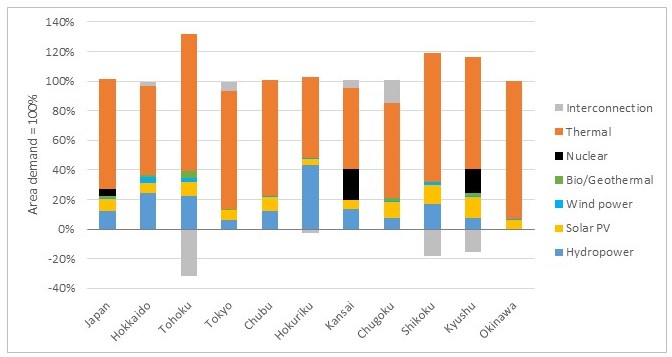
Note: Figures in percentages represent ratios of electricity produced by each source and utilization of interconnections to electricity demand in the area.
Time Slots with the Largest Renewable Share
On a national basis, renewables marked the highest hourly share reached 62% between 12:00 and 13:00 on 5 May 2018. Among all areas, the highest renewable share was recorded by the Shikoku area at 102% between 10:00 and 11:00 on 20 May. The Kyushu Electric area follows to Shikoku, renewables produced 96% of the electricity demanded between 12:00 and 13:00 on 3 May in the area. In other areas with great electricity demand, such as the Tokyo and Kansai Electric areas, renewables supplied almost half the power demanded in some time slots.The largest shares of renewables were commonly recorded with areas when; it was on Sunday which is a day of the week with lower demand, in the sunny weather daytime when solar PV generates power at most. For example, in Shikoku, renewables produced more electricity than 2.2 GW of the demand in the area between 10:00 and 14:00 on Sunday, 20 May. The demand was roughly 30% lower than the average daytime demand in the 1st quarter, which was around 3.0 GW. Roughly 2.2 GW of electricity – 1.6 GW by solar PV, 0.5 GW by hydropower, and 0.1 GW by wind power and bioenergy were generated, renewables solely satisfied more than 95% of the electricity demand for four hours.
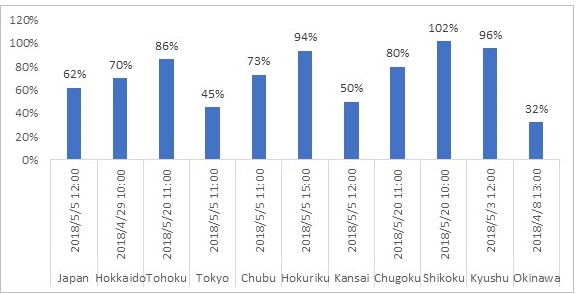
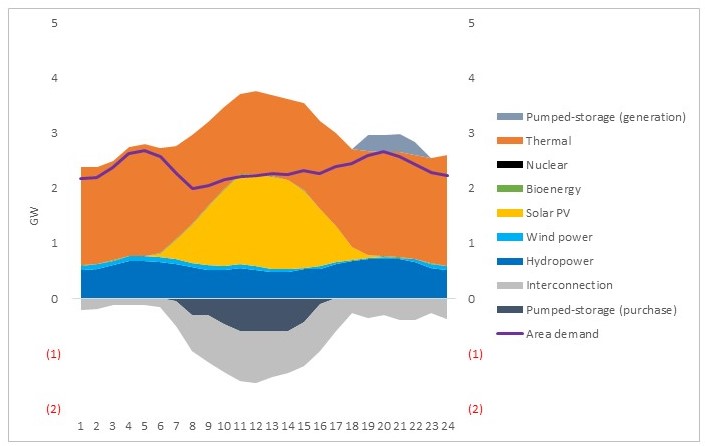
Time Slots with the Smallest Renewable Share: The Declining Shares in the Early Summer Nights Could be a Challenge
On a national basis, renewables marked the smallest hourly share of just 10%, on 19 June. By area, the Okinawa Electric area marked the smallest share of renewables at a mere 0.4%, at 20:00 on 28 June, followed by the Tokyo Electric area at 4%, between 21:00 and 22:00 on 26 June.The lowest shares of renewables were commonly recorded in time slots with smaller supplies of hydropower and solar PV electricity, often during midnight hours. Even in the daytime, solar PV plants supplied much less energy in less sunny weather. In contrast, in the Tohoku Electric area, the smallest renewable share stood at 21%, a rather high value (recorded between 21:00 and 22:00 on June 26). This probably reflects a historically higher share of hydropower in the area, and a certain level of contribution made by bioenergy plants in electricity supply.
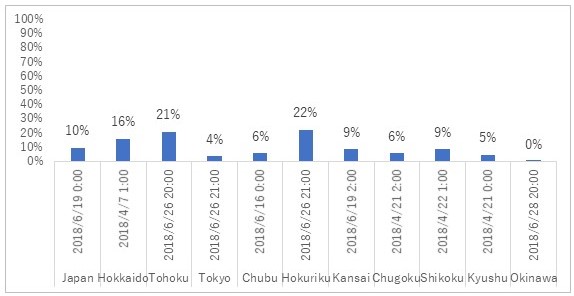
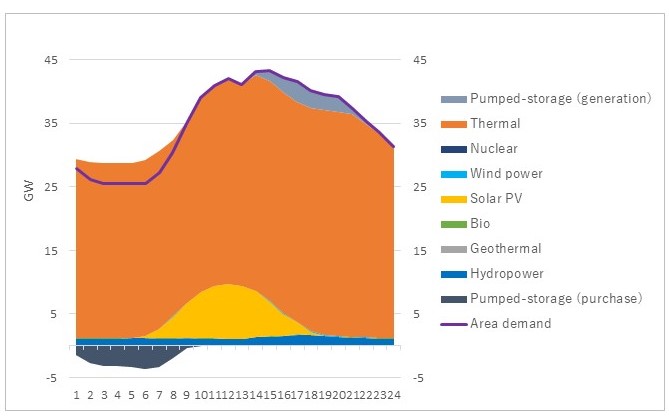
The smallest share of renewables was recorded between 21:00 and 22:00.
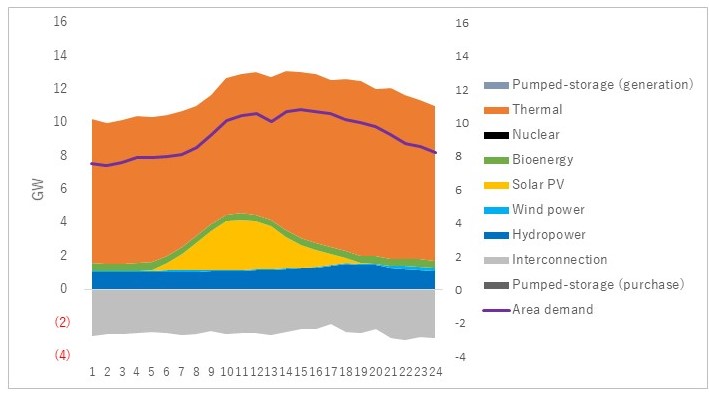
The smallest share of renewables was recorded between 21:00 and 22:00.
Conclusion
- For the first time in Japan, renewables temporarily supplied more than 100% of demand in the Shikoku Electric area. Many other areas also saw renewables supply more than 80% of demand. Even in the Chubu Electric area with large electricity demand, renewables supplied more than 70%. This fact indicates a large increase in the supply capacity of solar PV in the daytime.
- For the entire quarter, however, even in the Shikoku area, a mere 27% on a 24-hour basis. At the moment, time slots with a higher renewable share are concentrated in the daytime. A challenge to address next lies in how to raise the renewable share in other hours of the day. Especially important is how renewables can satisfy more of the electricity demanded in the evening and at night. A promising solution would be more accelerated deployment of wind power, bio-generation and geothermal as they operate virtually all day long, a feature helpful in raising the renewable share on a 24-hour basis.






